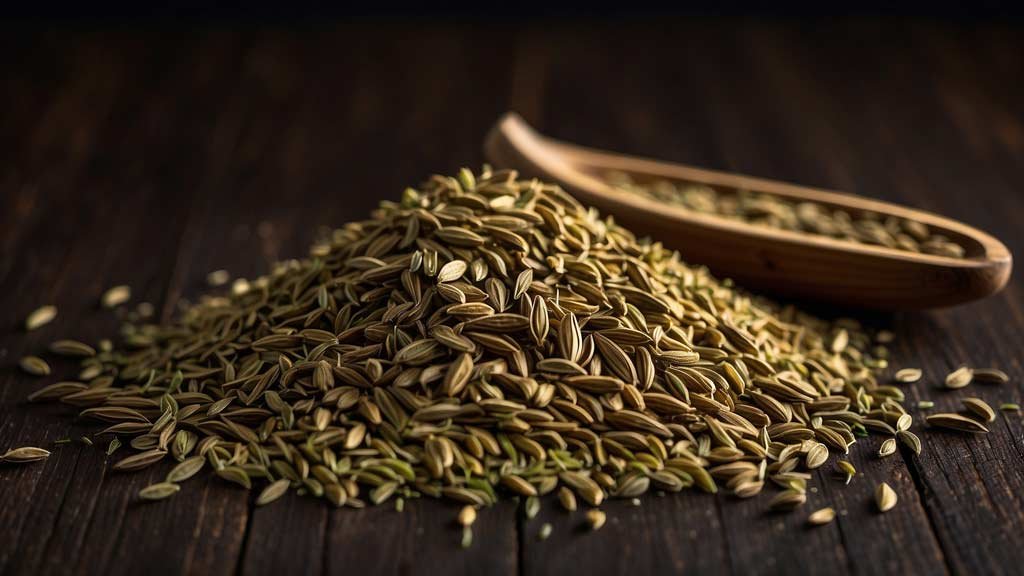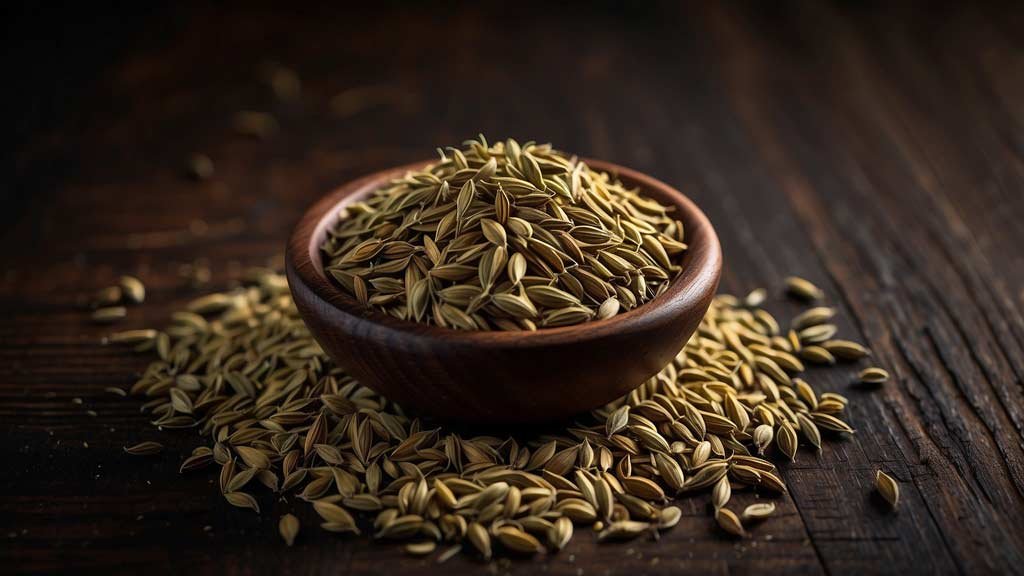The First Breath of Cumin
Crack open a jar of cumin seed and the air fills with a warm, earthy aroma—nutty, slightly bitter, even a bit smoky. Some people say it reminds them of dry desert heat, others of toasted bread. In kitchens across the world—from India to Mexico—you’ll find it sizzling in oil or tucked into spice blends. But cumin seed isn’t just about taste. This tiny brown seed has been woven into medicine for centuries, whispered about in old texts, and confirmed in modern labs. It’s one of those spices that sits quietly in your cupboard, unassuming, while hiding a lot more power than its size suggests.
Table of Contents
Cumin in History and Tradition
Cumin (Cuminum cyminum) belongs to the parsley family, Apiaceae, which already tells you something—it’s related to coriander, fennel, and caraway. In ancient Egypt, cumin seeds were found in the tombs of pharaohs, used for preservation and ritual. Greeks and Romans sprinkled it liberally on food, sometimes even treating it like pepper, a sign of both taste and status.
In Ayurveda, cumin seed has been prized for digestion—an herb that “lights the fire” of agni, or digestive strength. Traditional Chinese Medicine has placed it among warming herbs that move qi and clear dampness. Folk medicine from the Middle East to North Africa used cumin infusions to ease colds, bloating, and menstrual discomfort. It’s amazing how cultures, separated by distance, still landed on the same idea: cumin seed as a digestive and protective ally.
Cumin Seed and Digestion
Let’s start with the gut because that’s cumin’s true stage.
How Cumin Helps the Stomach
Cumin seed is carminative—meaning it helps reduce gas and bloating. When you toast the seeds and chew them, they release essential oils that stimulate salivary glands and gastric secretions. More saliva and stomach juice mean food gets broken down better, and nutrients get absorbed more efficiently.
Studies have shown cumin seed extracts can increase the activity of digestive enzymes like lipase, amylase, and protease. That’s a fancy way of saying it helps break down fat, starch, and protein, making digestion smoother.
Everyday Uses for Digestion
- Toss toasted cumin seeds into soups or beans to reduce heaviness.
- Brew a cumin tea (just steep a teaspoon in hot water) after a heavy meal.
- Chew a pinch of raw seeds for quick relief when you feel bloated.
I remember once eating a chickpea curry that was far too rich. My stomach rebelled. Someone handed me a little mix of cumin and fennel to chew. Within minutes, the cramps calmed, almost like the seeds whispered to my belly to take it easy.
Blood Sugar and Metabolism
Cumin seed has caught the eye of researchers for its role in blood sugar regulation. In several clinical studies, supplementation with cumin seed extract led to reductions in fasting blood glucose and improvements in insulin sensitivity.
How does it work? Partly through its antioxidants. Cumin is rich in compounds like cuminaldehyde and terpenes, which may influence enzymes in glucose metabolism. Some research suggests cumin helps pancreatic beta cells—the very cells that release insulin—stay healthy under oxidative stress.
For people with type 2 diabetes, cumin seed powder has been shown to reduce HbA1c levels (a long-term measure of blood sugar) in randomized trials. That’s not a miracle cure, but it’s significant.
A spice you sprinkle on roasted vegetables might be quietly balancing your blood sugar—that’s wild, isn’t it?
Immunity and Antimicrobial Action
Cumin doesn’t just play nice with digestion and sugar. It’s also a spice with immune-boosting clout.
The seed contains essential oils like cuminaldehyde, cymene, and terpenes that show antimicrobial effects. Lab studies have demonstrated that cumin oil can inhibit the growth of certain bacteria, fungi, and even parasites. Historically, cumin water was given for coughs, fevers, and chest congestion.
It’s also a decent source of iron. Just a teaspoon of cumin seeds contains around 1.4 mg of iron, about 17% of the daily requirement for women. Iron, of course, plays a role in hemoglobin production, which means stronger oxygen transport and better immune defense.
Think of cumin as one of those spices that fortifies from within, giving the body subtle reinforcements.

Antioxidants in Cumin Seed
Antioxidants often get thrown around in health talk like buzzwords. But cumin seed really delivers. It contains flavonoids, phenols, alkaloids, and essential oils that scavenge free radicals—those unstable molecules that damage cells.
Animal studies have shown cumin seed extracts protect against oxidative stress in the liver and kidneys. In other research, cumin was found to increase levels of natural antioxidants in the body, like glutathione and catalase.
That’s not small. Free radical damage links to aging, inflammation, and chronic disease. By neutralizing them, cumin could help keep tissues healthier over time.
Weight Management and Cholesterol
A curious area of research has been cumin’s role in weight loss. Several randomized controlled trials found that women who took cumin powder daily lost more weight and body fat compared to those who didn’t. One study even compared cumin to orlistat, a pharmaceutical fat-blocker, and found comparable effects on weight reduction and cholesterol.
Cumin may influence lipid metabolism, reducing LDL cholesterol and triglycerides while increasing HDL (the “good” cholesterol). That ties back to its effect on digestion and metabolic enzymes.
Of course, cumin isn’t a magic bullet. You can’t sprinkle it on a donut and expect miracles. But as part of a balanced diet, it seems to nudge the body toward healthier fat processing.
Cumin Tea, Oil, and Supplements
Cumin isn’t locked to the spice rack. It shows up in many forms.
- Cumin Tea: A traditional remedy for bloating and colds. Tastes earthy and warming.
- Cumin Essential Oil: Concentrated, used cautiously in aromatherapy or diluted on the skin.
- Cumin Capsules or Extracts: Standardized doses for blood sugar and cholesterol trials.
If you’re going the supplement route, stick to what’s been tested—usually 300–600 mg extract per day. Too much essential oil can irritate the skin or gut, so respect its potency.
Safety and Cautions
Cumin seed, in culinary amounts, is safe. But higher doses in concentrated extracts can sometimes cause nausea or dizziness. Because it influences blood sugar, people on diabetes medications should be cautious. Pregnant women should avoid heavy medicinal doses since cumin may stimulate uterine contractions.
For most people though, using cumin daily in food is not just safe, but nourishing.
Cumin Beyond Medicine: The Flavor of Life
It’s easy to get wrapped up in health claims and forget that cumin seed is, at heart, delicious. It’s the earthy bass note in chili, the bright spark in raita, the grounding heat in Moroccan tagines. Food is medicine, yes, but food is also joy.
I sometimes toast cumin seeds until they pop, crush them in a mortar, and stir them into yogurt with mint and salt. It’s simple, but it feels like both comfort and vitality in a bowl.
And maybe that’s cumin’s greatest gift—it lives at the crossroads of flavor and function.
Final Thoughts
Cumin seed is more than a spice. It’s an ancient ally for digestion, a quiet regulator of blood sugar, a shield for immunity. It belongs in the kitchen, in the teacup, sometimes even in the medicine cabinet.
When you next pinch cumin between your fingers and toss it into hot oil, remember you’re carrying forward a practice thousands of years old. A practice rooted in both pleasure and healing.
Article Sources
At AncientHerbsWisdom, our content relies on reputable sources, including peer-reviewed studies, to substantiate the information presented in our articles. Our primary objective is to ensure our content is thoroughly fact-checked, maintaining a commitment to accuracy, reliability, and trustworthiness.
- Ghorbani, A., Esmaeilizadeh, M., & Asadpour, E. (2014). Therapeutic effects of cumin (Cuminum cyminum L.) on metabolic syndrome: A randomized clinical trial. Journal of Evidence-Based Complementary & Alternative Medicine, 19(4), 187–193. https://doi.org/10.1177/2156587214542043
- International Journal of Molecular Sciences. (2017). Cumin (Cuminum cyminum L.) and its active compounds: A review of their pharmacological activities. International Journal of Molecular Sciences, 18(11), 2340. https://doi.org/10.3390/ijms18112340
- Jafari, S., Sattari, R., & Karami, M. (2017). Effects of cumin on glycemic control, lipid profile, and oxidative stress in patients with type 2 diabetes: A double-blind randomized clinical trial. International Journal of Endocrinology and Metabolism, 15(2), e42757. https://doi.org/10.5812/ijem.42757
- National Center for Complementary and Integrative Health. (2020). Herbs at a glance: Cumin. National Institutes of Health. https://www.nccih.nih.gov/health/cumin
- Sowbhagya, H. B. (2013). Chemistry, technology, and nutraceutical functions of cumin (Cuminum cyminum L.): An overview. Critical Reviews in Food Science and Nutrition, 53(1), 1–10. https://doi.org/10.1080/10408398.2010.500232
- World Health Organization. (2009). WHO monographs on selected medicinal plants (Vol. 4). Geneva: World Health Organization. https://apps.who.int/iris/handle/10665/44063

